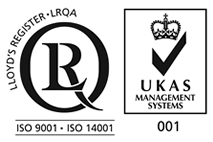
Main Products
Copyright 1998-2025 Firmetal Group All Rights Reserved. | Sitemap
Ni-Ti porous material micro parts prepared by physical field activation sintering and the sintering method, the method is to weigh and mix metal nickel Ni and metal Ti powder and fill the mold, and then under the vacuum degree ≤0.01Pa and the pressure of 50 ~ 150MPa applied at both ends of the mold, The mold containing Ni-Ti mixed powder is heated rapidly by alternating current. The heating process can adopt electric field constant temperature sintering method or electrothermal fluctuation sintering method. After the mixed powder is formed in the mold, the parts can be removed by power off and air cooling. The invention simplifies the process flow, the molding process is easy to control, the sintering process is pollution-free, the sintering time is shortened, the sintering temperature is reduced, and the product quality is improved.
Ni-Ti porous material microparts have attracted much attention in the biomedical field in recent years due to their excellent biocompatibility, unique shape memory properties, superelasticity and corrosion resistance. Studies have shown that the porous structure can promote bone tissue regeneration, nutrient exchange and drug transport. At the same time, the porous shape memory alloy can better adapt to the surrounding bone environment by adjusting the hardness and strength of the implant material through the control of the pore related parameters. It is expected to be applied to hard tissue replacement materials and surgical implant materials. The large number of microporous structures and the large number of grain boundaries (including twin interface, etc.) in the micro-parts of Ni-Ti porous materials make it have higher damping characteristics than ordinary metal materials, and can be used as high damping materials and damping devices. The superelastic (also known as rubber elastic) characteristics of shape memory alloys also make them have good damping and energy absorption properties. At the same time, as a porous material, its porous structure can also provide inherent damping characteristics and improve the scattering ability of shock waves. At present, there are many methods for the preparation of Ni-Ti porous material micro-parts, including combustion synthesis, elemental powder mixture sintering, pre-alloy powder sintering and hot isostatic pressing. In several preparation methods, Ni and Ti elements are first mixed powder high-energy ball milling, and then after a certain treatment finally obtain porous shape memory alloy.
Hot isostatic pressing sintering is an ideal process for preparing Ni-Ti porous microparts. In a special structure of the container, the machined parts are simultaneously applied to high pressure and high temperature sintering, under such heat and pressure conditions, the defects in the parts (such as cracks and holes) can be basically eliminated.